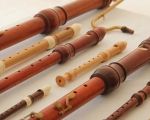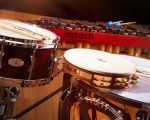Choosing the Right High-Quality String Instruments for Musicians
As a musician, I know that the sound quality of your instrument can make all the difference between an average performance and a truly mesmerizing one. Whether you're playing the violin, cello, or any other string instrument, the quality of your instrument is essential for achieving the best sound. Over the years, I’ve learned a lot about what makes a string instrument stand out, and I’m excited to share my experiences and insights with you to help you choose the right instrument.
Why Quality Matters
When I first started playing, I didn’t quite grasp the significance of quality when it came to string instruments. I used to think that as long as I could play, the instrument didn’t matter too much. But after years of performing, I realized that the quality of the instrument plays a huge role in both the sound and ease of playing. Higher-quality instruments tend to have better craftsmanship, better materials, and more attention to detail, all of which contribute to a more resonant, clear, and powerful sound.
Imagine playing your favorite piece on an instrument that sounds warm and rich, its vibrations filling the room. On the other hand, a poorly crafted instrument can sound flat and lack the depth needed to express the nuances of your performance. It’s clear to me now that the best string instruments allow musicians to unlock their true potential. Here’s a closer look at what makes high-quality instruments stand out.
Key Features of High-Quality String Instruments
One of the first things I learned was how important it is to choose an instrument made from the right materials. The top wood of string instruments, such as spruce or cedar, greatly influences the sound’s richness and projection. The back and sides of the instrument are often made from maple, which enhances the instrument’s resonance. The craftsmanship is another crucial factor; a finely crafted instrument has more accurate intonation and greater responsiveness.
Another aspect to consider is the setup of the instrument. A well-set-up string instrument has strings that are at the optimal height from the fingerboard, making it easier to play smoothly. The bridge, tailpiece, and pegs should also be aligned perfectly to ensure that every note rings out with clarity.
Finding the Right Fit for Your Playing Style
Choosing a string instrument is a deeply personal decision. As a professional, I understand that no two musicians have the same style or sound preference. Some players prefer instruments with a bright, sharp tone, while others may gravitate toward instruments with a darker, more mellow sound. Your individual style, preferences, and genre of music will play a role in the instrument you choose.
For example, if you’re a solo violinist performing classical pieces, you might look for a violin with a bright, focused tone that cuts through an orchestra. On the other hand, if you’re a cellist who plays in a chamber ensemble, you may prioritize an instrument with a rich, full sound that blends well with other instruments. Understanding your own musical voice is key to selecting an instrument that will help you express it fully.
Where to Find High-Quality String Instruments
When it comes to finding high-quality string instruments, it’s crucial to purchase from reputable dealers who specialize in fine instruments. Over the years, I’ve worked with various shops across the United States, and I’ve learned that not all sellers have the same level of expertise. If you’re looking to buy an instrument that will elevate your performance, I recommend finding a shop that not only offers a wide range of instruments but also provides expert guidance in choosing the right one for you.
It’s also essential to consider the after-sale services that come with purchasing a high-quality instrument. Reputable shops will offer instrument repairs, maintenance, and setup services to ensure that your instrument stays in top shape. These services are essential, as a string instrument requires regular attention to maintain its sound and playability.
Story of a Life-Changing Instrument Purchase
To illustrate the difference a high-quality string instrument can make, I’d like to share a personal story. A few years ago, I was playing in a prestigious orchestra and feeling a bit stuck with my performance. Despite hours of practice, I couldn’t get the same rich sound from my instrument that I’d heard from my colleagues. After much deliberation, I decided to invest in a new violin. It wasn’t just any violin—it was handcrafted by a renowned luthier who had spent decades perfecting his craft.
The moment I played the new violin, I was amazed by the difference in sound. The instrument’s deep, resonant tones seemed to pour effortlessly from my bow. It was like a weight had been lifted off my shoulders, and I could finally express my music with the depth and emotion I had always hoped for. The investment was worth every penny, and it completely transformed my performance, making me a better musician in the process.
Investing in Your Sound
Investing in a high-quality string instrument isn’t just about buying an expensive piece of equipment. It’s about investing in your sound and your musical growth. The right instrument can inspire you to practice more, perform better, and truly express yourself through music. As a musician, I’ve learned that the best instruments can bring out the best in you, whether you’re playing professionally or simply for the joy of it.
In conclusion, the key to finding the perfect string instrument is understanding what makes an instrument truly great. Whether it’s the materials, craftsmanship, or the setup, every detail counts. By choosing a high-quality instrument, you’re not just improving your sound—you’re investing in your future as a musician. So take your time, do your research, and find the instrument that speaks to you. It could be the key to unlocking your full potential as a musician.








